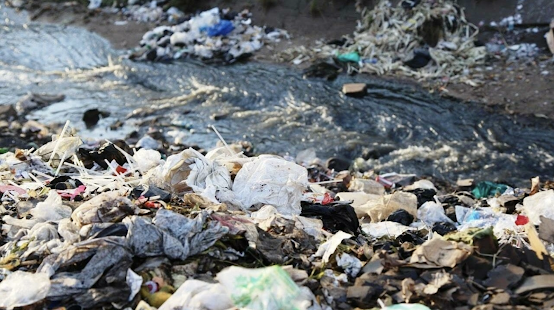A Digital Future
Lagos in Nigeria, Nairobi in Kenya, and Cape Town in South Africa are three internationally recognised digital hubs in Africa, with more than thousands of start-ups and etc. landed in these places (IMF, 2021). Amongst these three places, I have briefly touched on the technologies emerged in Nairobi by talking about the Sanergy toilets. Today, as the last post of this blog, I would like to explore on this edgy-cutting topic. To investigate how technologies reshape sanitation solutions and practices, let's go back to Nairobi and dig deeper.
Kenya has been praised as the Silicon Savannah. About 4 in 10 people in Kenya has internet access. As its capital city, Nairobi is a leading site for Internet Communication Technologies (ICTs) development in this decade (Graham and Mann, 2013 cited in Chambers and Evans, 2020). It is also a place that has large areas of informal settlements. One of the most famous informal settlements, Kibera accounts for about 6% of the capital land but is home to about 60% of Nairobi's population. It resides in the city centre, besides a beautiful and privileged golf course, but is not being recognised on official maps - only blank spaces show on maps.
Focus 1: Internet of Things(IoT) and ICT
Chambers and Evans (2020) has investigated in how IoT have reconfigured the interpersonal relationships of residents with case studies on water and energy infrastructures in informal settlements in Nairobi. They found that the technologies helped residents to overcome infrastructural uncertainty. For example, MobiTech has developed Mobi-water, providing smart meters, smart water tanks and so on to customers. These applications allow users to monitor their real-time water usage and give them more control on water usages. Empowered by these applications, informal settlers save money in their personal economics and save time, which is essential for them as most of the residents work in informal economics, having multiple jobs at the same time (Hart, 1973). More time means more jobs, thus more money. Additionally, the applications moderate tensions between landlords and renters due to the clear readings that avoid conflicts. Generally, technologies contribute substantially for the informal settlers in reshaping their interpersonal relations and granting more money and time.
Focus 2: Mapping and Kibera
Research in Zimbabwe has shown that mapping is a useful tool for low-income communities to document their sanitation needs, and to leverage strategic relationships with local government. Map Kibera is such a project. Map 1 produced by Map Kibera illustrates where sanitation service can be found in Kibera. There is a lack of sanitation services in the west side of the settlement, and there is no service around school areas. Also, the number of sanitation services is almost countable. Considering the population, the map coveys a significant sanitation problem in Kibera.
Map 1: Water and Sanitation in Kibera Source: Map Kibera
Further on this topic, UN-Habitat employed geocomputation skills to provide spatial analysis. A collection of maps was produced to show access and density challenges in Kibera. For example, Map 2 illustrates the density of toilets and bathrooms. In the middle part of Kibera, there was a hotspot of sharing of toilets and bathrooms among residents. Condition eased as further away from the settlement centre.
Map 2: Density of Toilets and Bathrooms in Kibera Source: UN-Habitat
Map 3 shows the conditions and accessibility of the waste disposal points. Only a handful waste disposal points were fair or good to use. Most of them appeared to be red, discouraging usage. Also, most of the areas are in yellow, which meant that people had no access to waste disposal points. This substantially deterred residents to dispose their waste in designed places and encouraged them to dispose the waste in nearby rivers, leading to water contaminations and so on.
Overall, mapping gives more straightforward illustrations and explanations. As the old saying goes, a picture worth a thousand words.
To sum up, technologies encountering water and sanitation leads us to new understandings of water and sanitation challenges in Africa. However, would digital technologies introduce a new urban asymmetry in Africa just like the sewage system did needs time to tell. In the meanwhile, we should still bear in mind that not all countries or regions in Africa has high internet penetration as Kenya does. In central region, there is only 12% - unequal development is on its way.
I hope you've enjoyed all my posts so far. It's been a great journey for myself! Until next time.






I really enjoyed this post Cecilia! I love how you conceptualised futures for the water and sanitation sector through the lens of digitalisation, which is a concept that will ultimately take over over the next few decades. The use of mapping for low income communities sanitation needs is fascinating! You mentioned that digitalisation could contribute to further inequalities within regions in Africa- what do you believe is the best way to implement these technologies going forward to prevent this from happening?
ReplyDeleteThank you for your feedback! Much appreciated. As for the technology implementation, I personally don't think there is a "best way". The problem is more rooted in the broader socio-economic background. For example, the government or foreign direct investment can support the implementation as one-off projects, but what about the maintenance of these technologies and whether people can afford to use them? This can only be solved by an overall economic development in the region, which might be more sustainable.
Delete